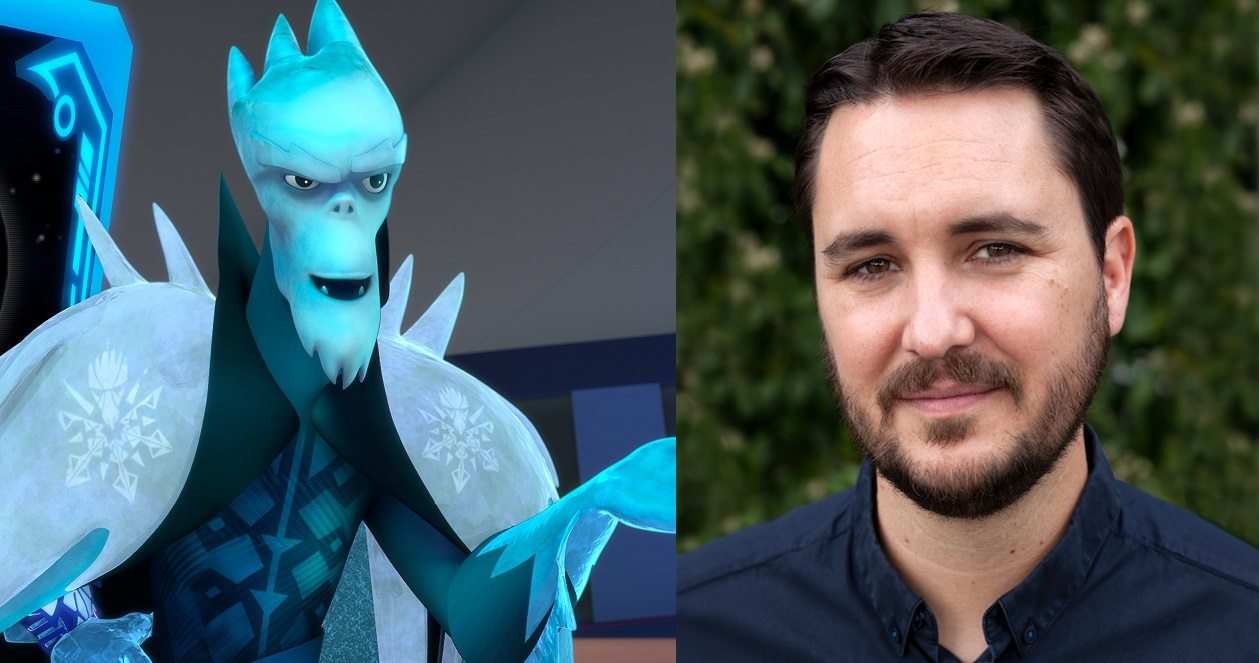

A key early scene from BRAVE. As MERIDA shoots an arrow, her parents QUEEN ELINOR and KING FERGUS look on, along with other astounded Scottish men. (Photo: (C)2012 Disney/Pixar. All Rights Reserved)
The Internet is abuzz with Brave, the new fantasy-fairy tale animated movie from Pixar and Disney that opens nationwide today.
Much ballyhooed is the fact that it’s the first feature cartoon from Pixar with a strong female lead. Here, the story is all about Merida (voiced by Kelly Macdonald), a tomboy-type and royal offspring of King Fergus (Billy Connolly) and Queen Elinor (Emma Thompson) who refuses to abide by traditional courtly values and mores — mainly, that she marry one of the doofus suitors who represent the Scottish clans. She wants to determine her own fate.
The girl would rather have fun — shoot arrows at targets and trees, ride her horse Angus, and otherwise “choose her own adventures,” rather than the traditional life-path that seems set out before her. It’s an admirable message, even if it arrives about 35 years after the height of the women’s movement. But better late than never. Good media role models for girls, especially in cartoons, are hard to come by. You’d think by now, animated “ladies” would have come a long way, baby. But with Hollywood cartoons, the track records shows it’s mostly been a boys’ club.
Think of the animated heroines we show our kids. Yes, there’s Ariel (The Little Mermaid), Belle (Beauty and the Beast), the eponymous Pocahontas and Mulan, royal offspring (The Princess and the Frog), and Rapunzel (Tangled). But for the most part, girls and young women have been ignored. Only five female-centric animated movies have cracked the list of 50 top-grossing animated films of all time — Beauty and the Beast (No. 15), Tangled (No. 21), Monsters vs. Aliens (No. 22), Lilo and Stitch (No. 42) and Pocahontas (No. 44), according to Box Office Mojo.
In other words, women as cartoon heroes aren’t all that profitable. So Brave is to be commended, right?
Partly.
I recently learned that the marketing of Brave seems to fly in the face of its reputed commitment to strong female role-models. Or, at least Pixar and a certain fitness club have different ideas of what “strong” means.
Select “Sports Clubs” (in locations in Boston, DC, Philly and New York) are gearing up for what they’re calling a “Change Your Fate Workout,” a promotion “designed to encourage participants to channel their inner bravery and transform their bodies,” says the press release. “Take control of your own destiny!” Busting moves with fake swords and bows-and-arrows, and assuming horseback riding stances, fitness seekers can exercise “Choreographed to an upbeat and empowering soundtrack,” the mysportsclubs.com website says, “mimicking the battle moves of ‘Brave’s main character Merida.”
I’m not seeing the positive message here. I worry this is another way young women and girls are going to feel bad about their bodies. To my mind, using the ideals of inner bravery for the cause of transforming your body is a mockery of any supposed positive message that Brave attempts to make.
Get this: There was a 2008 study released by the Geena Davis Institute on Gender in Media which found that in the majority of animated movies with female protagonists — from 1937′s “Snow White and the Seven Dwarfs” to 1998′s “Mulan” — most portrayed their female heroines as super-attractive. They dressed in sexy, revealing clothing. They had unrealistically shaped bodies. In the plot lines, these female protagonists were praised not for their actions or character, but for their appearance.
Parents already have to counteract the powerful princess myth. Brave the movie helps. I sincerely hope that girls go see it. In this viewer’s opinion, it’s a better-than-average kids movie with a constructive message. Yes, it stoops to slapstick too often, and probably could have taken more risks. To my mind, Brave is actually less about being “brave” to choose your own fate than sending the message: be brave enough to forgive your mother and forge a powerful bond with her.
Meanwhile, this “Brave workout” nonsense is not progressing the fates of women — let alone the way women are portrayed in the media as beauties, mermaids, and she-warriors. In our culture, princesses already have an image problem. They don’t need a body image problem, too.


